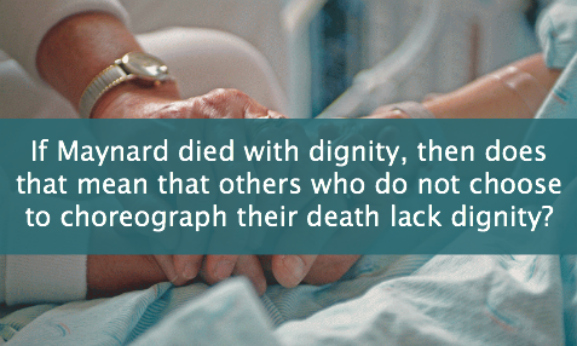Earlier this month, Brittany Maynard ended her life. She had become the public face of the euthanasia movement when she moved to Oregon so they she could end her life using Oregon’s “Death with Dignity Act.” Before doing so, she engaged in a video campaign with the group Compassion and Choices.
The debate over euthanasia and physician-assisted suicide has been taking place for decades, but her publicized choice about ending her life once again brings the debate into the public arena. Wesley J. Smith says: “Compassion and Choices wants to exploit her assisted suicide as a crow bar to pry open California and other states to legalizing doctor-prescribed death.”
Already three countries and five states have some form of physician-assisted suicide. We can see the extreme in the Netherlands. In my book, Christian Ethics in Plain Language, I document the number of people who have been put to death without their consent. Doctors in that country are even allowed to decide if a child with a disability should live.
What about this term death with dignity? In her column in the San Francisco Chronicle, Debra Saunders asks a great question. “If Maynard died with dignity, then does that mean that others who do not choose to choreograph their death lack dignity?” She explains that the language that has been chosen by pro-euthanasia advocates: “death with dignity suggests that there is something undignified about holding onto life.”
What will be the impact on the disabled? Joni Eareckson Tada believes that assisted suicide poses a significant danger to people with disabilities. “Who is to say when multiple sclerosis or ALS is classified as terminal? People who receive a diagnosis of a chronic disabling condition often experience suicidal feelings, but later adapt very well.”
Death with dignity might sound compassionate, but the reality of the slogan should concern everyone.
 Listen Online
Listen Online Watch Online
Watch Online Find a Station in Your Area
Find a Station in Your Area











 Listen Now
Listen Now Watch Online
Watch Online
